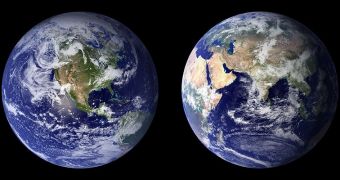According to a new study, it would appear that teenagers and students are more likely to understand, relate to, and accept the fact of human evolution if they have a firm grasp of the age of our planet. Earth is more than 4.5 billion years old, and relating the evolution of our species over time with this massive time line begins to make more sense in the minds of some. Most people know the age of our planet, but not many are aware of how much time 4.5 billion years actually is. According to some psychologists, the number eludes comprehension through its sheer size, PhysOrg reports.
The new investigation was conducted by researchers at the University of Minnesota, in the United States, and details of it appear in the March issue of the respected scientific publication Evolution. “The role of the Earth's age is a key variable that we can use to improve education about evolution, which is important because it is the unifying principle of biology,” explains UM associate professor in the biology Program, Sehoya Cotner. The expert is among the faculty teaching general biology classes at the university, and also the lead author of the new journal entry.
The UM team believes that notions of the age of the Earth should be taught in biology classes as well, even though they are also covered in physical sciences classes. The experts believe that it is crucially important for the children to relate the two concepts – the planet's age and the amount of time it took the human species to evolve – in a biological sense. This could make them less prone to nefarious influences from religious groups that would have them believe the Earth is only 6,000 years old, and that dinosaur fossils were placed in the ground by Jesus Christ, as a test of their faith.
Cotner also reveals the results of an analysis the UM team conducted, which includes data from present and previous studies. He shows that 2 percent of students in the US are taught only creationism in schools, whereas 14 percent are taught neither. Some 22 percent receive education in the idea of creationism and theory of evolution, whereas 62 are taught only scientifically-accurate data. “In other words, about one in four high school biology teachers in the upper Midwest are giving students the impression that creationism is a viable explanation for the origins of life on Earth. That's just not acceptable. The Constitution prohibits teaching creationism in schools,” Cotner says.

 14 DAY TRIAL //
14 DAY TRIAL //